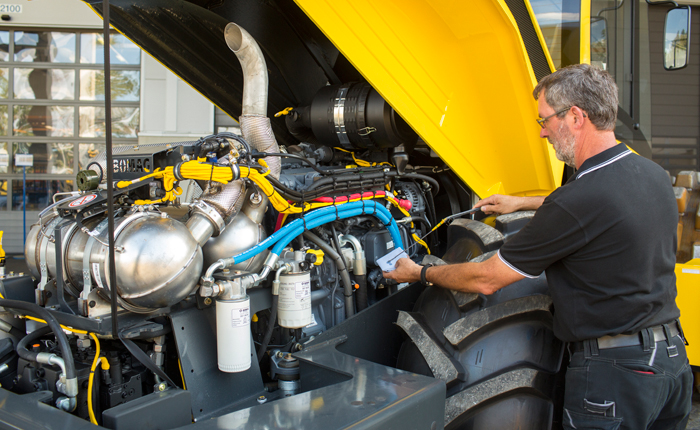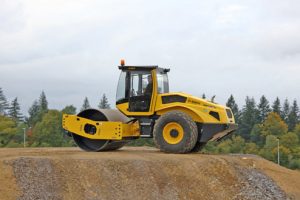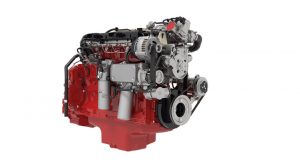
The engine emissions journey is not over yet, according to Bomag
Engine manufacturers have been forced to meet increasingly demanding low emission standards since 1999 as a result of EU legislation, adopted by all member states, and mirrored in the USA and Japan. ‘Off-road’ equipment manufacturers in turn have had to engineer these increasingly sophisticated and expensive engines into their equipment against a legislated time-frame. The results, shown in the illustration above, are remarkable with NOx reduced by 95.7% and particle emissions down by 96.5%, but not all equipment manufacturers are meeting Stage IV yet!
Today, as demonstrated at the giant German Bauma trade fair in April, the leading construction equipment manufacturers are delivering machines meeting Stage IV European emission standards. Some manufacturers however, are using a loophole in the legislation, regarding ‘stock’ engines, and continue to supply machines meeting the previous Stage IIIB. This may not sound like much of a difference but the step change between the two standards, particularly regarding mono-nitrogen oxides (NOx), is large as shown in the table.
Engine and machine manufacturers are now using an array of often confusing technology to meet Stage IV by exhaust after-treatment. Our ‘jargon-busting’ guide is shown in the side bar on the right.
The introduction of more complicated and more expensive engines has not been met with the universal approval of machine owners and operators. The rental sector, in particular, has been vocal believing the changes add to the cost and complexity of their businesses, despite it being a legislative requirement.
The reality is that the journey started in 1999 does not end with Stage IV as a further cut in emissions, known as Stage V, is already in the offing. Due to come into effect in January 2019 Stage V will require a reduction in the allowable particulate matter (PM) from 0.025 to just 0.015 g/kWh. And of more significance it will introduce a completely new ‘particle count’ standard for all ‘off-road’ diesel engines between 19 and 560 kW. (See the table below)
Whilst Stage IV could be achieved with the use of a diesel oxidation catalyst (DOC) avoiding the use of a diesel particulate filter (DPM) it is thought that Stage V will require all engine manufacturers to use a DPF to meet the new particle count standard which is being introduced to reduce the output of very fine particles that are thought to do the most damage to the human respiratory system.
Some engine manufacturers notably Deutz with their TCD series* are supplying engines as ‘Stage V ready’ with the use of very sophisticated DPF’s and a regenerative process that uses special ‘engine-modes’ to generate the required high exhaust temperatures. Engine manufacturers who have not used DPF’s so far, may well have some catching up to do!
JARGON BUSTER
Diesel Particulate Filter (DPF)
A diesel particulate filter is a device designed to remove diesel particulate matter or soot from the exhaust gas of a diesel engine. DPF’s require ‘regeneration’, a process that uses hot exhaust gases to burn off the particles gathered in the filter.
Diesel Oxidation Catalyst (DOC)
The diesel oxidation catalyst owes its name to its ability to promote oxidation of several exhaust gas components by oxygen, which is present in ample quantities in diesel exhaust. When passed over the oxidation catalyst, the following diesel pollutants can be oxidized to harmless products that pass through the exhaust.
• carbon monoxide (CO)
• gas phase hydrocarbons (HC)
• organic fraction of diesel particulates (SOF)
 Selective Catalytic Reduction (SCR)
Selective Catalytic Reduction (SCR)
Selective catalytic reduction is a means of converting nitrogen oxides, also referred to as NOx, with the aid of a catalyst into diatomic nitrogen (N2) and water (H2O). A diesel exhaust fluid, now called AdBlue, is added to a stream of exhaust gas and is absorbed onto the catalyst leaving harmless CO2 to pass through the exhaust.
Diesel Exhaust Fluid (AdBlue)
DEF is an aqueous urea solution (AUS) made with 32.5% urea and 67.5% demineralized water, standardized as AUS32 under ISO 22241. DEF is used as a consumable in selective catalytic reduction in order to lower the NOx concentration in diesel exhaust gases. The German Association of the Automobile Industry (VDA) registered the trademark ‘AdBlue’ for AUS 32.
SCR systems are sensitive to potential chemical impurities in the urea solution, therefore the solvent is demineralized water. The urea solution is clear, non-toxic and safe to handle. However, it can corrode some metals and so must be stored and transported carefully. Care must be taken when filling a machine’s tank.
DEF is stored in a tank on board the machine, and injected into the exhaust stream by a metering system. The injection rate depends on the specific after-treatment system, but is typically 2–6% of diesel consumption volume. This low dosing rate ensures long fluid refill intervals and minimises the tank’s size. An electronic control unit adjusts the addition of fluid in accordance with such parameters as engine operating temperature and speed. It is recommended that DEF be stored in a cool, dry, and well-ventilated area that is out of direct sunlight.








